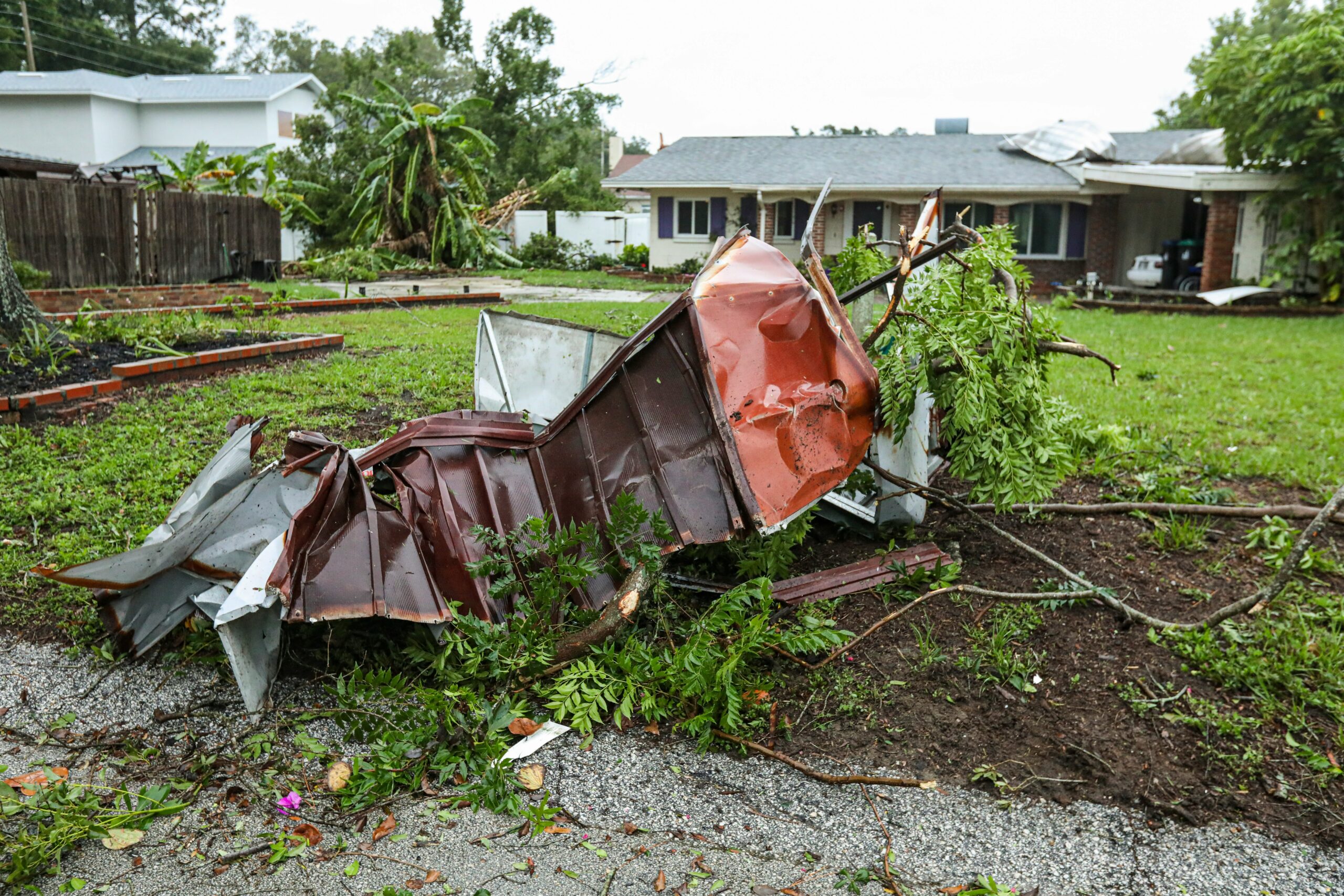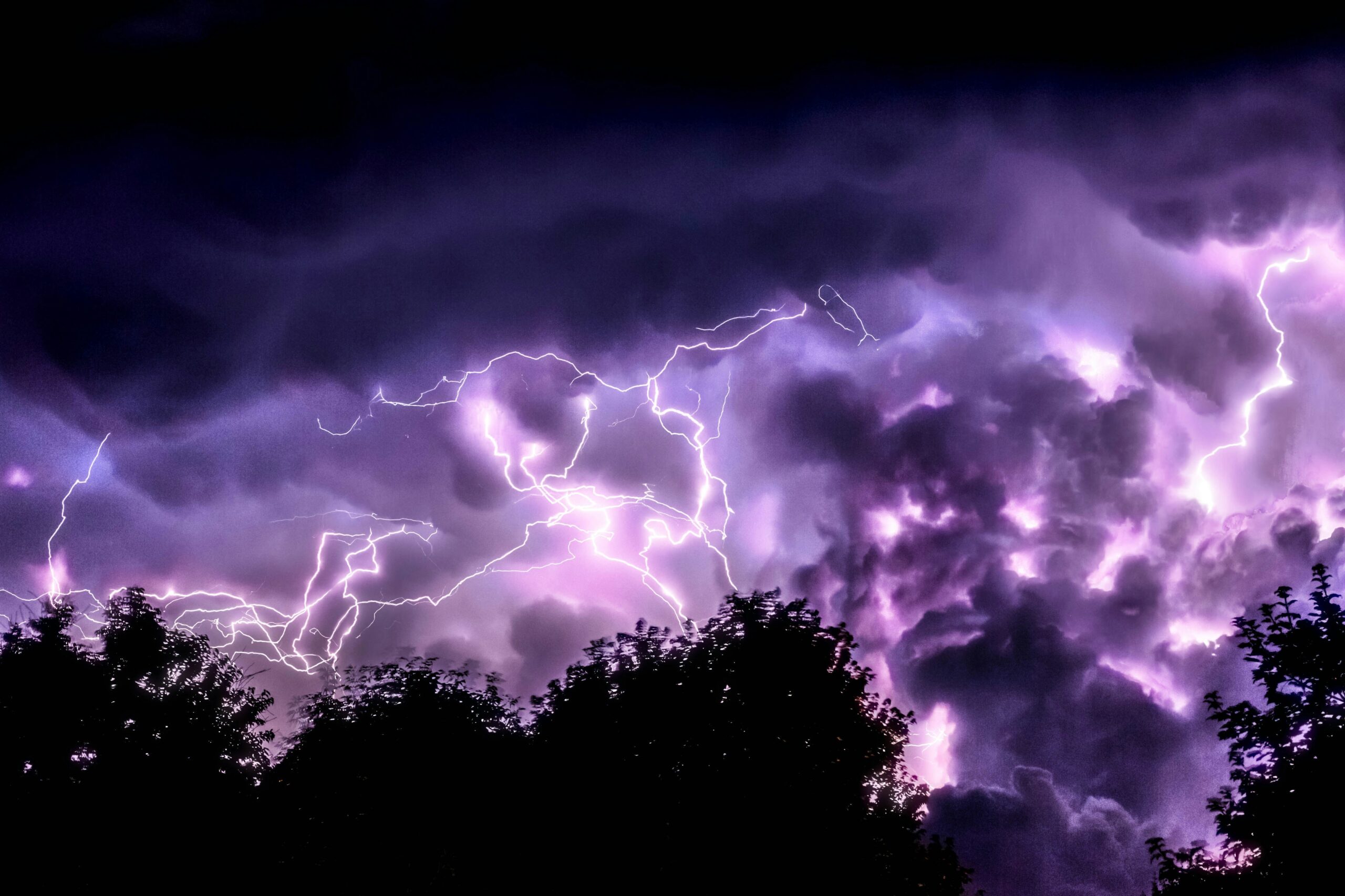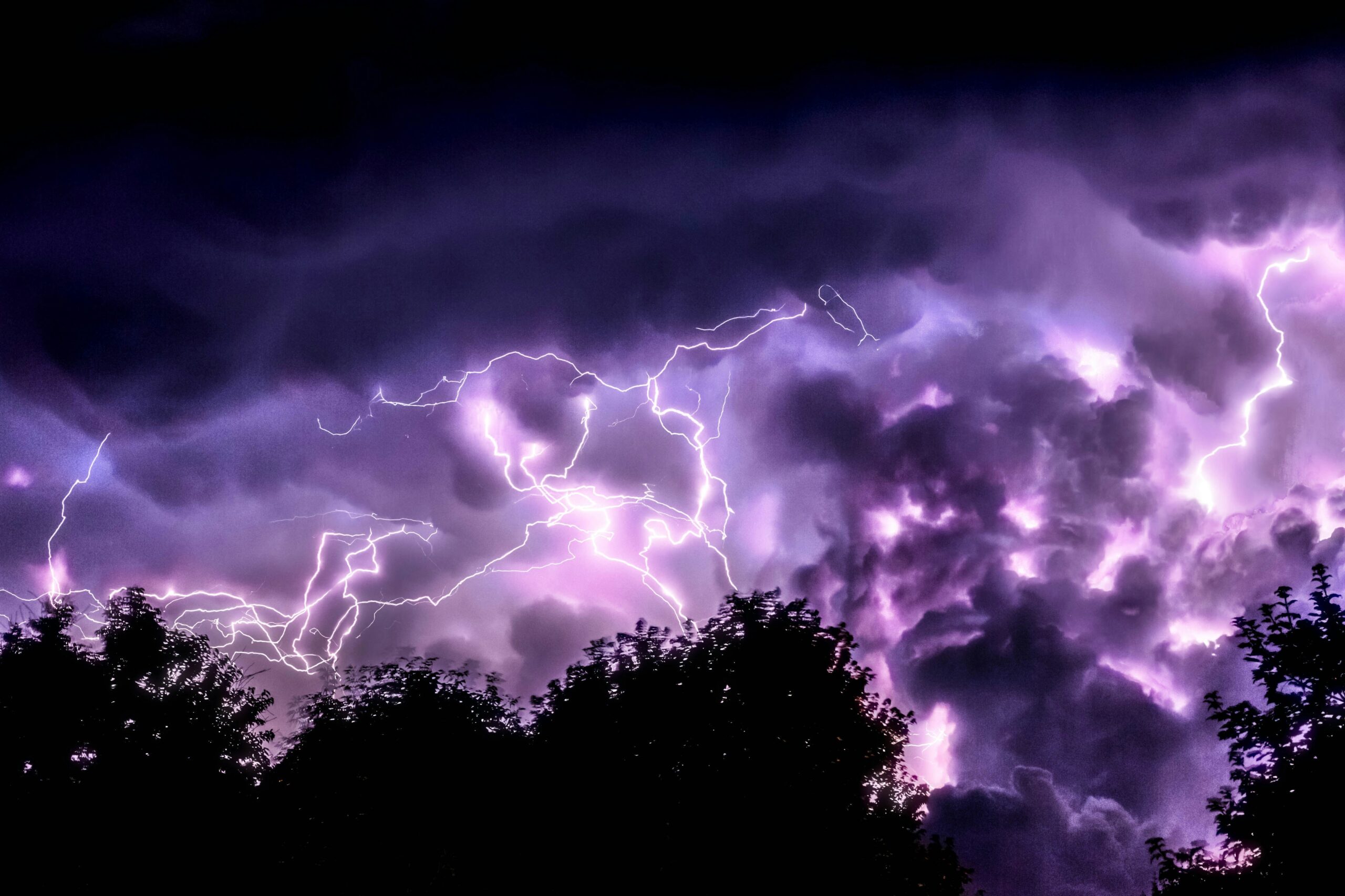Introduction to the Tornado in Buffalo, NY
On the evening of [insert date], the city of Buffalo, NY, experienced an unexpected and destructive tornado that left a profound impact on the community. This rare weather phenomenon took residents by surprise, ushering in severe winds, torrential rain, and in its wake, a trail of devastation. The tornado touched down at approximately [insert time] and progressed swiftly, affecting various neighborhoods and causing significant structural and environmental damage.
The hardest-hit areas included [specific neighborhoods or regions], where reports indicated extensive damage to homes, businesses, and the local infrastructure. Initial assessments highlighted downed power lines, uprooted trees, and widespread property damage. Emergency services were promptly activated, working tirelessly to manage the immediate fallout and ensure the safety of the residents.
This event marked an unprecedented occurrence for Buffalo, a city unaccustomed to such extreme weather events, raising concerns and prompting discussions about the preparedness and resilience of the community. The tornado’s sudden manifestation and the ensuing damage have since become a focal point for local and state authorities, sparking a series of responses aimed at recovery and future mitigation.
Overall, the recent tornado in Buffalo, NY, serves as a stark reminder of nature’s unpredictability and the pressing need for comprehensive disaster readiness and response strategies. As residents and officials continue to grapple with the aftermath, the city’s resilience and the collective efforts toward rebuilding and understanding the incident’s causes are more crucial than ever.
Historical Context of Tornadoes in Buffalo, NY
Buffalo, NY, resides in a geographic region where tornadoes are an infrequent but not unheard of phenomenon. Historically, the city experiences a relatively lower incidence of tornado events compared to regions situated within the central United States, often referred to as “Tornado Alley”. The probability of a tornado touching down in Buffalo and its surroundings has been statistically lower, typically averaging fewer than one tornado per year within the broader upstate New York region.
Reviewing the historical record, there have been only a handful of notable tornado occurrences in Buffalo. The most significant event in recent memory was the tornado that struck in July 2017. This tornado, classified as an EF2 on the Enhanced Fujita Scale, caused considerable property damage but did not result in any significant injuries. Apart from sporadic and less severe incidents, such as the EF0 tornado that briefly touched down in June 2006, Buffalo’s experience with tornado activity has been relatively rare.
The rarity of tornadoes in Buffalo can be explained by the region’s climatic conditions and geographical features. Located near the Great Lakes, Buffalo benefits from certain environmental buffers that tend to deter severe thunderstorm and tornado formation. Despite these natural defenses, it remains essential to remember that no area is entirely immune to tornadoes. The statistical likelihood may be low, but it is not zero, and the recent event underscores the necessity of preparedness and awareness.
Comparing this recent tornado incident to historical data, it appears to follow the same trend of infrequent but potentially impactful events. As weather patterns continue to evolve and climate change possibly influences the frequency and intensity of severe weather events, understanding the historical context provides valuable insights. Although tornadoes in Buffalo are uncommon, history has shown that the community must remain vigilant and informed about the potential for such natural occurrences.
Meteorological Conditions Leading to the Tornado
Understanding the meteorological conditions that led to the recent tornado in Buffalo, NY, necessitates a detailed analysis of various weather parameters. The convergence of specific atmospheric factors created an environment conducive to tornado development. One of the primary indicators was the significant fluctuation in temperature. A rapid rise in temperatures followed by an abrupt drop often creates unstable atmospheric conditions, which can lead to severe weather phenomena, including tornadoes.
Atmospheric pressure changes also played a crucial role. Before the tornado, the region experienced a decrease in barometric pressure, which is a typical precursor to storm development. This drop in pressure, combined with the temperature instability, facilitated the formation of strong updrafts and downdrafts. These vertical movements in the atmosphere can generate the rotational energy necessary for a tornado.
Humidity levels were another critical factor. The combination of high humidity and warm temperatures contributes to the formation of severe thunderstorms. In the case of Buffalo, elevated moisture content in the air provided the essential fuel for storm intensification. This high moisture content significantly increased the likelihood of strong thunderstorms, which are often precursors to tornadoes.
Weather warnings issued by meteorological services such as WGRZ highlighted the potential for severe weather conditions in the days leading up to the tornado. They included advisories about the risk of tornadoes due to the predicted atmospheric instability. Such warnings are vital for public preparedness and can help mitigate the impacts of these natural disasters.
Immediate Impact and Damage Assessment
The recent tornado that struck Buffalo, NY, has left a trail of substantial devastation across various sectors, significantly impacting buildings, infrastructure, and the natural environment. The powerful winds, clocking at over 100 mph in certain areas, resulted in extensive structural damage. Residential homes, commercial properties, and public buildings bore the brunt of the force, with many rendered uninhabitable. Roofs were torn off, windows shattered, and walls collapsed, presenting a grave safety hazard and displacing numerous families. The local emergency services have reported over 200 homes being severely damaged or destroyed.
Infrastructure has not been spared either. Power lines and communication towers were toppled, causing widespread outages that affected thousands of residents. Roads were rendered impassable due to fallen trees and debris, significantly hindering rescue and relief operations. The storm also damaged several key utilities, disrupting water and gas supplies and complicating recovery efforts. In the words of a local resident, “It’s apocalyptic. Our neighborhood is unrecognizable.”
The natural environment, too, has suffered immensely. Numerous parks and green spaces have been left severely scarred, with centuries-old trees uprooted and vegetation decimated. This sudden alteration has not only impacted the ecological balance but also disrupted the local wildlife. A first responder noted, “It’s heartbreaking to see such natural beauty destroyed in the blink of an eye. The community will take years to rebuild not just the buildings, but the environment too.”
Tragically, the tornado has not just resulted in property damage but also human casualties. The local hospital reported treating over 50 individuals for injuries ranging from minor cuts to severe trauma. Sadly, there have been confirmed fatalities, the exact number of which continues to be updated as rescue operations progress. The community is mourning the loss of life, and immediate support is being provided to the affected families. First responders have been working tirelessly, showcasing immense bravery and resilience.
Response from Emergency Services
In the wake of the recent tornado incident in Buffalo, NY, local emergency services were mobilized promptly to address the crisis. The coordinated efforts among the fire departments, police, and medical teams proved to be crucial in mitigating the impact of this natural disaster. The fire department was among the first responders, conducting search and rescue operations in the debris-strewn areas. They navigated through collapsed structures to extricate trapped individuals, operating under challenging conditions to ensure the safety of the affected residents.
Concurrently, the police were instrumental in enforcing immediate emergency evacuations and securing the disaster zone to prevent any further casualties. They set up designated evacuation routes and facilitated the safe movement of individuals from high-risk areas to temporary shelters. Their role extended beyond evacuation; they also provided critical updates and maintained order as part of the overall crisis management.
The medical teams, consisting of paramedics and hospital staff, played a vital role in treating the injured. Mobile medical units were established to provide on-site care, significantly reducing the time it took for the severely wounded to receive medical attention. Hospitals in the vicinity were placed on high alert and prepared to handle an influx of patients, ensuring comprehensive and immediate care for those affected by the tornado.
Coordination among these emergency services was vital for an efficient response. The incident command system facilitated communication and strategy development, allowing different teams to work seamlessly together. Joint efforts ensured that rescue operations, emergency evacuations, and medical responses were conducted without delay, showcasing a well-organized approach to crisis management in Buffalo, NY. The swift and effective actions of the emergency services were pivotal in addressing the immediate needs of the community, highlighting the importance of preparedness and cooperation in dealing with natural disasters.
Community Response and Stories of Hope
In the immediate aftermath of the devastating tornado incident in Buffalo, NY, the community’s response was nothing short of inspiring. Neighbors quickly rallied together, offering assistance and support to those most affected by the calamity. Stories emerged of people opening their homes to displaced families, sharing meals, and providing comfort during these trying times. This local solidarity played a crucial role in helping many residents navigate the initial shock and uncertainty brought about by the tornado.
Local businesses also stepped up to offer aid, reflecting a collective spirit of compassion and resilience. Restaurants provided free meals to first responders and affected families, while hardware stores donated essential supplies for cleanup and repairs. Such acts of generosity strengthened community bonds and underscored the importance of local businesses in times of crisis. Their quick and selfless actions significantly contributed to the recovery process, ensuring that the immediate needs of the community were met.
Volunteer efforts were another cornerstone of the community’s response. An organized network of volunteers quickly mobilized to assist with search and rescue operations, provide medical aid, and support cleanup efforts. Many residents took to social media to coordinate resources and information, while local community centers became hubs for distributing food, clothes, and other necessities. These volunteer initiatives were vital in restoring a sense of normalcy and hope for those impacted by the disaster.
Furthermore, numerous uplifting stories circulated, highlighting the incredible resilience of the Buffalo community. From individuals risking their safety to rescue neighbors to groups organizing fundraisers for affected families, these narratives of hope and support showcased the best of humanity. These examples not only illustrate the strength of the Buffalo community but also serve as a reminder of the profound connections that bind people together in the face of adversity.
Media Coverage and Public Awareness
The recent tornado incident in Buffalo, NY, garnered considerable media attention, both from local outlets and national networks. Local news channels such as WGRZ played a pivotal role in informing the public about the impending weather emergency. Their timely updates, delivered through live broadcasts and frequent news bulletins, ensured that the local populace was promptly aware of the developing situation. This early dissemination of information proved crucial in minimizing the potential risks associated with the tornado.
WGRZ and other local stations utilized their extensive local knowledge and resources to provide tailored coverage, focusing on the most affected areas and specific needs of Buffalo residents. They also collaborated closely with meteorological experts to deliver accurate forecasts and storm tracking updates. Furthermore, local news reporters were on the ground, offering real-time reports from affected neighborhoods which helped convey the severity of the situation and reinforced why residents needed to heed safety warnings.
National media outlets also contributed to raising awareness about the tornado incident in Buffalo, bringing the situation to the attention of a wider audience. This national coverage, although more general in nature, served to highlight the broader implications of extreme weather events and underscored the importance of comprehensive preparedness strategies. Networks like CNN and FOX News provided overviews of the tornado’s impact, often featuring segments about Buffalo’s response and recovery efforts.
In addition to traditional media, social media platforms emerged as a critical tool for real-time updates. Residents and authorities alike used platforms such as Twitter, Facebook, and Instagram to share instant updates, photos, and videos of the tornado and its aftermath. Hashtags specific to the Buffalo tornado became trending topics, facilitating a communal exchange of information and experiences. This user-generated content provided raw, on-the-ground insights that complemented the professional journalistic coverage. However, the fast-paced nature of social media also posed challenges, such as the potential spread of misinformation, which underscores the need for caution and cross-verification.
Future Preparedness and Safety Tips
In the aftermath of the recent tornado incident in Buffalo, NY, it is crucial for residents to fortify their preparedness strategies to mitigate potential impacts of future tornadoes. Expert recommendations from meteorologists, emergency response teams, and safety consultants offer essential guidelines for creating comprehensive emergency plans, building safer shelters, and recognizing tornado warning systems.
Firstly, creating a detailed emergency plan is paramount. Residents should design a plan that includes all family members and conduct regular tornado drills to ensure everyone knows the procedure. The plan should delineate a safe meeting spot, method of communication, and an up-to-date emergency kit stocked with essentials like water, non-perishable food, first-aid supplies, flashlights, and important documents.
Secondly, reinforcing structures to withstand tornadoes can significantly reduce damage and enhance safety. Investing in a designated storm shelter, either underground or in an interior room fortified with resilient materials, is a prudent measure. According to safety experts, shelters should comply with FEMA guidelines to provide maximum protection. Having these shelters inspected and maintained regularly ensures they are functional when needed most.
Moreover, understanding and responding promptly to tornado warnings can save lives. Residents should familiarize themselves with the various forms of tornado alerts, such as watches and warnings, and know the local siren systems. Integrating NOAA weather radios and smartphone apps that provide real-time updates into your alert system ensures timely information flow. It is essential to take cover immediately upon noticing visual cues such as dark, often greenish skies, large hail, and loud roars similar to a freight train.
Lastly, community engagement plays a crucial role in preparedness. Neighbors can form support networks, sharing resources and providing aid during emergencies. Local authorities and organizations frequently offer training sessions and drills enhancing communal readiness. By staying informed, getting involved, and preparing comprehensively, Buffalo residents can enhance their resilience against future tornado events.



